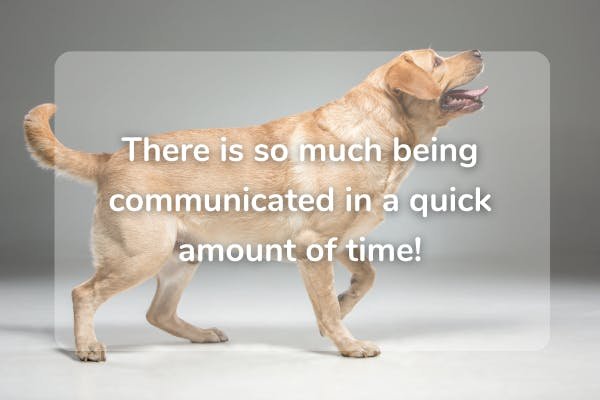If we had tails would we trust each other more?
It’s a shame that humans don’t have tails. I find that my dog’s tail tells me a lot about his mood, who he likes, what he wants, and what he needs. Dogs communicate so much to us and each other.
Tail position can share: happiness, submissiveness, worry, illness, fear, dominance. Wag speed and breadth displays the purpose: a greeting, I’m friendly and non-threatening, I feel insecure, let’s go have fun, let’s fight. Wag direction shows: I’m happy and relaxed, I have positive feelings or negative feelings.
In a group setting like family, friends or a work team, communication can become exceedingly intricate. This complexity arises not only from our role-related considerations but also from the myriad personal thoughts and concerns, encompassing family, friends, and the state of the world.
Here’s an example of a situation one of my coaching clients and I talked about which is exemplary of how complicated communication can be.
In her new supervisory role, my client was determined to transform the team dynamics by fostering collaboration and transparency. The person previously in this position was very hands off which gave people a lot of autonomy, but this created silos resulting in the right hand not knowing what the left hand was doing. Leadership often couldn’t answer questions other departments were asking, thus misrepresenting people’s work.
She had a meeting coming up with other directors in the organization and she requested a document from a supervisee to prepare her for this meeting and he responded negatively.
The staff member perceived the request as uncommon, as it hadn't been made before. Responding defensively, he questioned the necessity of the document and asserted his capability to manage the situation independently. Despite my client's attempt to clarify her preference for increased involvement to enhance awareness, the explanation was not well-received.
We discussed strategies for her to convey her communication style as a supervisor and facilitate a mutual understanding with her staff member, promoting a sense of trust between them.
I have all my coaching clients do values sorts. This helps identify how you want to behave and present yourself in light of difficult situations. I also shared Adam Grant’s information regarding the three types of conflicts that happen in conversations: Task, Relationship, and Domain. I suggested that perhaps her staff member felt doubted about their abilities to perform their job.
This is what my client reported in how the situation played out:
“I had a good conversation and approached it from the task perspective which was super helpful. He took my wanting to be more involved and aware to mean that he wasn’t doing what he needed to, and that I didn't trust him. We are going to work on communicating differently during our weekly staff meetings so I have more awareness.”
Unlike dogs with tails, humans rely on deep conversations to understand one another. Building relationships of trust requires an ongoing process to develop a good faith perspective, believing in the best intentions of each other.
So since you can’t wag your tail: listen deeply, don’t assume intentions and give each other grace often.


